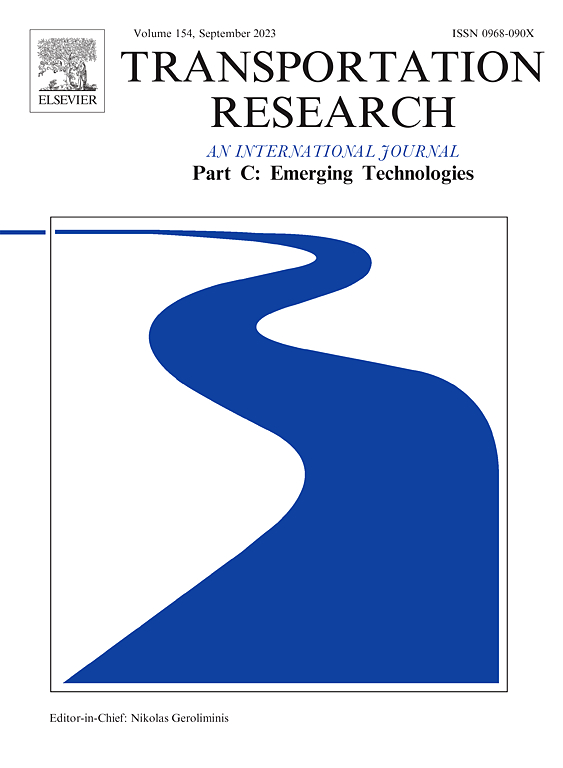Enhancing public transit adoption through personalized incentives: a large-scale analysis leveraging adaptive stacking extreme gradient boosting in China
IF 7.6
1区 工程技术
Q1 TRANSPORTATION SCIENCE & TECHNOLOGY
Transportation Research Part C-Emerging Technologies
Pub Date : 2025-02-01
DOI:10.1016/j.trc.2024.104992
引用次数: 0
Abstract
Motivating individuals to utilize public transportation through financial strategies, including both rewards and penalties, has been acknowledged as an effective approach to manage traffic demand and mitigate congestion-related issues. Personalized travel rewards, in contrast to economic sanctions like road tolls, tend to be more socially accepted. Nonetheless, insights into the effectiveness of personalized incentives remain limited, often constrained by studies that rely on small, non-representative samples of travelers. This study seeks to identify the variables that prompt individuals to switch to public transportation, drawing on extensive quasi-experimental data from a widespread public transit incentive program featured in one of China’s the largest navigation apps. This data encompasses the sociodemographic details of users, as well as their local and long-distance travel patterns. Both a binary Logit model and an adaptive stacking extreme gradient boosting (AS-XGB) model are applied to interpret and predict the changes in users’ public transit usage. Besides gender, job type and preferred travel mode, incentive reward category is found to be one of the significant determinants. In particular, rewards such as breakfast bread or travel vouchers have proven more effective than other types of incentives, like supermarket coupons or tissue gift bags. Female participants, individuals without children, and those who used public transportation in the week prior to receiving the incentives showed a higher propensity to embrace these rewards. However, the influence of education level, car ownership status, or preferred travel mode largely varies as the city’s development level. For intercity travel, regardless of whether the user owns a car or not, her/his income level and education level both have significant impacts on the incentive effectiveness.
求助全文
约1分钟内获得全文
求助全文
来源期刊
CiteScore
15.80
自引率
12.00%
发文量
332
审稿时长
64 days
期刊介绍:
Transportation Research: Part C (TR_C) is dedicated to showcasing high-quality, scholarly research that delves into the development, applications, and implications of transportation systems and emerging technologies. Our focus lies not solely on individual technologies, but rather on their broader implications for the planning, design, operation, control, maintenance, and rehabilitation of transportation systems, services, and components. In essence, the intellectual core of the journal revolves around the transportation aspect rather than the technology itself. We actively encourage the integration of quantitative methods from diverse fields such as operations research, control systems, complex networks, computer science, and artificial intelligence. Join us in exploring the intersection of transportation systems and emerging technologies to drive innovation and progress in the field.

 求助内容:
求助内容: 应助结果提醒方式:
应助结果提醒方式:


